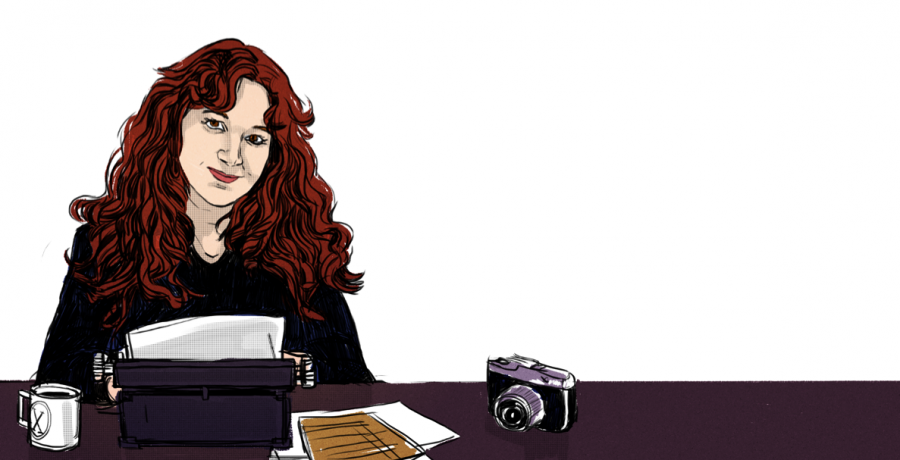Forty 40-year-old photographs, printed on vinyl and hung by giant safety pins, cover the white walls of the Englert Theater’s second floor gallery. Black and white faces smile, smirk, and smize from the shots Lisa Jane Persky captured with her original Nikon F.
In tandum with her upcoming memoir, Persky — a photographer, writer, and actress — scoured 20 rolls of film to wind up with X-Offenders: A Year in the Life of a Proto-Punk, February 1966-February 1967. The exhibit serves as a visual memoir of how it felt to live in this moment of time.
It came to rest in the Englert after artist and communication-studies Professor Kembrew McLeod met her years ago at the annual Pop Conference in Seattle. McLeod was working on Parallel Lines for the 33 1/3 book series, released last week.
“The premise is, it takes an album, but it’s not really just the making of an album, it’s using an album as a jumping off point to talk about a larger context,” he said. “It’s about downtown New York and the punk and disco scenes that Blondie came out of.”
He knew Persky, a journalist and actress in New York at the time, might be interested and able to share information.
“I was telling her that I was working on this book, and she said, ‘You know about my connection to Blondie, right?’ I said, ‘No, what’s that?’ ” McLeod said.
The connection ran deep. When the band was on the rise, Persky was dating original bassist Gary Valentine. Valentine wrote Blondie’s hit “(I’m Touched by Your) Presence, Dear” about Persky. She remains close friends with the band’s members.
She opened her address book and photo albums to McLeod, so when it came time for Mission Creek, he asked her to prepare the photo gallery. It was perfect preparation for finishing her memoir.
“I’m just not a person who looks back that much, but I decided I was going to,” Persky said. “One of the reasons you might stay away from that — and I did — is because it’s painful. There’s a lot of loss in this. I grew up in a period where people died from drugs, Vietnam, AIDS, so there’s a lot of grieving that I hadn’t really done.
“There’s a lot of people that are gone, all these people,” she said, looking around the gallery. “But not everyone. Before I’m gone, I want to honor them. A lot of the writing is honoring the ghosts, because they meant so much to me.”
As Persky honors her friends, McLeod honors the scene that he said frequently gets caricatured.
“Punk comes out of diverse roots,” he said. “It often gets boiled down to angry white guys. Punk was much more queer and artsy than gets represented.”
Lance Loud, television’s first openly gay man, seen in the gallery slumped on a couch, cigarette limp between his lips, was a punk musician in The Mumps. Beloved drag queen Divine performed in punk theater; he sits, face free of makeup, in front of a mirror in a dressing room he shared with Persky, in one of her photographs.
“New York punk rock and underground theater were evolving simultaneously in the same neighborhoods, right around the blocks from each other,” McLeod said. “There was a lot of crossover. And also with the art world — Andy Warhol was part of these scenes. This show in particular takes you through the street life, the cultural life of the avante-garde punk New York scene in the ’70s.”
McLeod’s upcoming next book will trace punk back further, into the ’60s and explore all of downtown New York in those decades.
The gallery covers only one year though; all things end, after all.
“The punk scene disbands,” McLeod said, “because everyone blows up big or flames out.”



